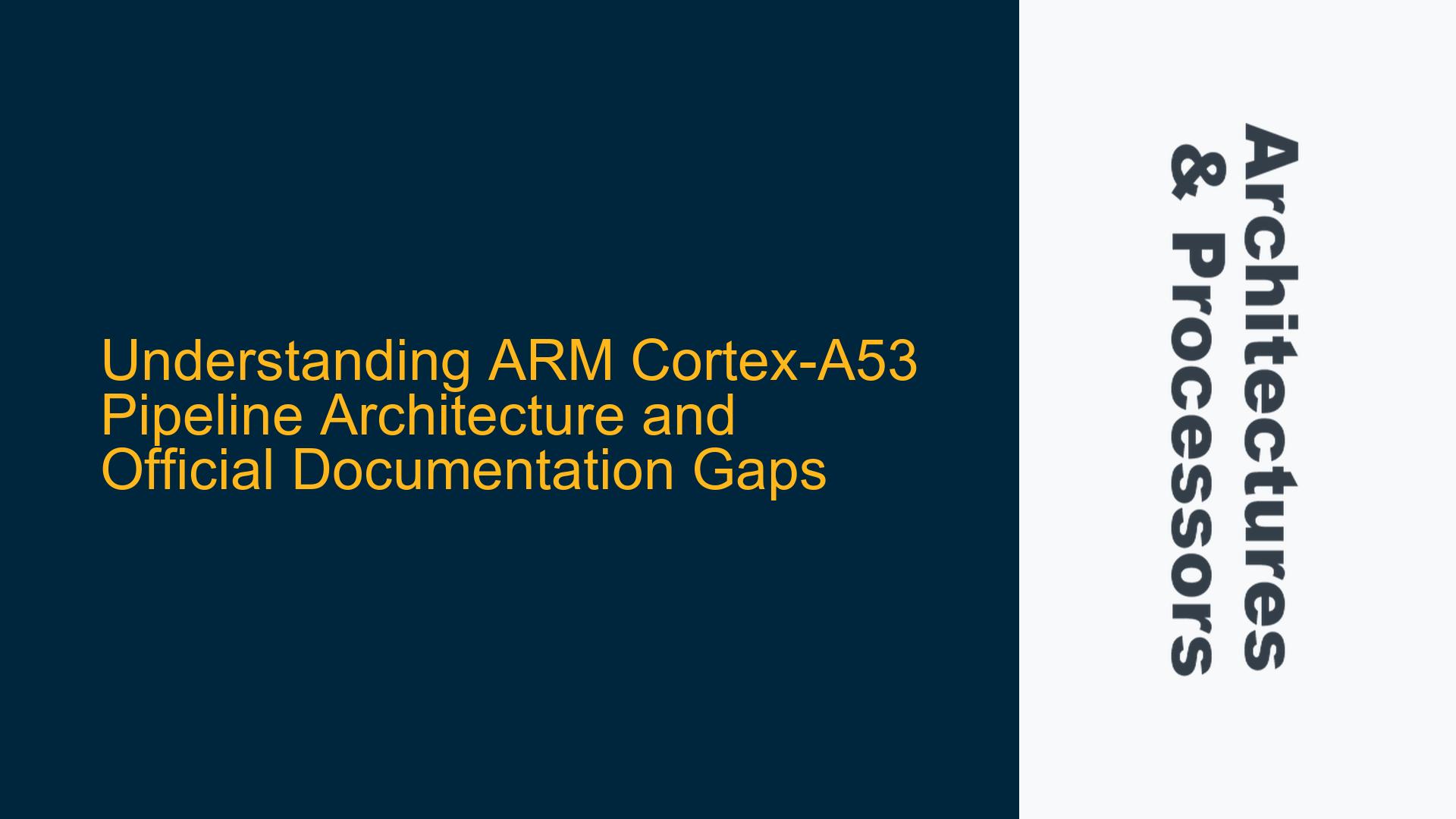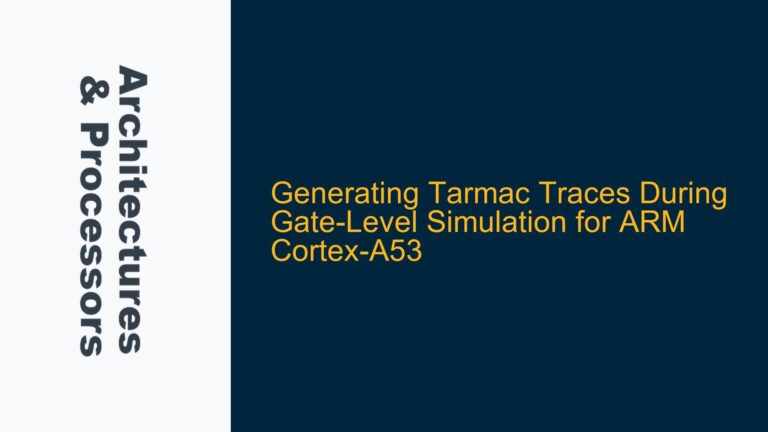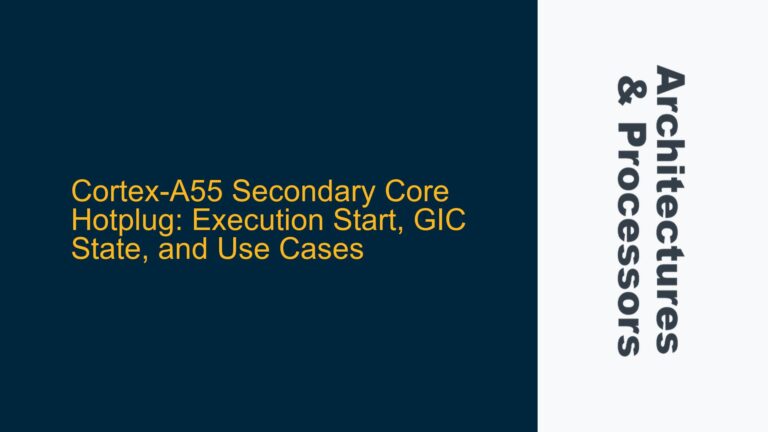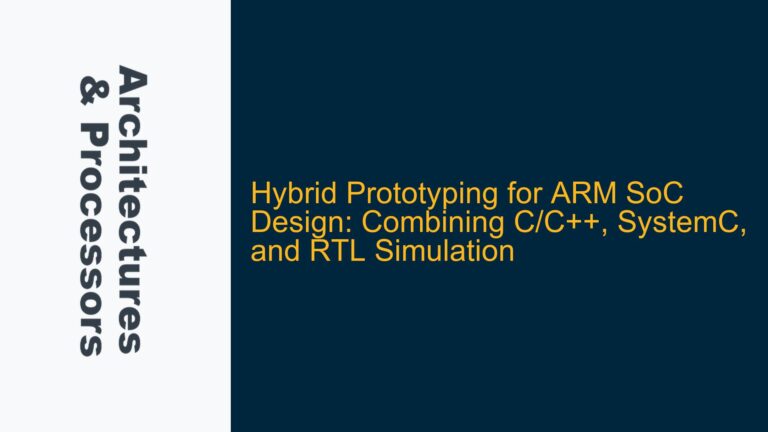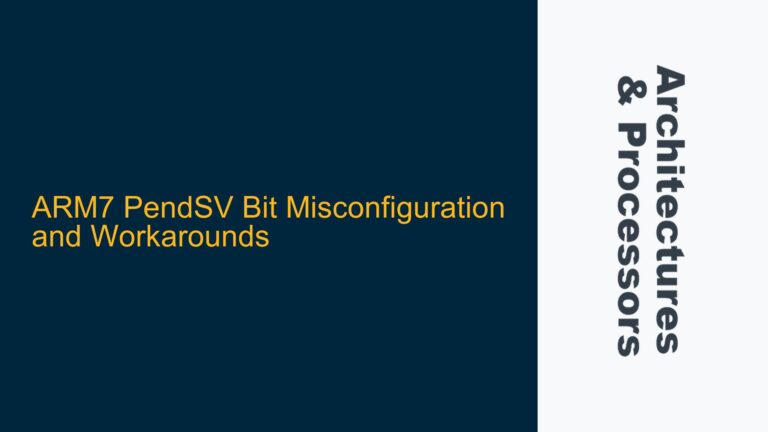ARM Cortex-A53 In-Order Pipeline Architecture Overview
The ARM Cortex-A53 is a highly efficient, low-power processor core designed for a wide range of applications, from mobile devices to embedded systems. It is part of ARM’s Cortex-A series and is based on the ARMv8-A architecture. One of the key characteristics of the Cortex-A53 is its in-order execution pipeline, which differs from the out-of-order execution pipelines found in higher-performance cores like the Cortex-A57 or Cortex-A72. The in-order nature of the Cortex-A53 means that instructions are executed in the exact sequence they are fetched, which simplifies the pipeline design but can lead to potential performance bottlenecks if not managed correctly.
The Cortex-A53 pipeline consists of several stages, each responsible for a specific part of the instruction execution process. These stages include instruction fetch, decode, issue, execute, and writeback. The pipeline is designed to maximize efficiency while keeping power consumption low, making it ideal for applications where energy efficiency is critical. However, the lack of detailed official documentation on the pipeline architecture can make it challenging for developers and researchers to fully understand the inner workings of the Cortex-A53.
The instruction fetch stage is responsible for retrieving instructions from memory. Given the in-order nature of the Cortex-A53, the fetch stage must ensure that instructions are fetched in the correct sequence. This stage is closely tied to the branch prediction unit, which attempts to predict the outcome of conditional branches to keep the pipeline filled with useful instructions. The decode stage then translates these fetched instructions into micro-operations that the execution units can understand.
The issue stage is where the decoded instructions are dispatched to the appropriate execution units. In the Cortex-A53, this stage is relatively straightforward due to the in-order execution model. However, the issue stage must still handle dependencies between instructions, ensuring that data hazards are managed correctly. The execute stage is where the actual computation takes place, with the Cortex-A53 featuring multiple execution units, including integer ALUs, floating-point units, and load/store units. Finally, the writeback stage is responsible for writing the results of the executed instructions back to the register file.
Understanding the pipeline architecture of the Cortex-A53 is crucial for optimizing code and diagnosing performance issues. However, the lack of detailed official documentation can make this task more difficult. While unofficial sources and diagrams can provide some insights, they may not always be accurate or comprehensive. This gap in documentation can lead to misunderstandings and suboptimal implementations, particularly for those who rely on authoritative sources for their work.
Challenges in Locating Official Pipeline Architecture Documentation
One of the primary challenges faced by developers and researchers is the scarcity of detailed official documentation on the Cortex-A53 pipeline architecture. While ARM provides technical reference manuals for the Cortex-A53, these documents often focus on high-level descriptions and do not delve deeply into the specifics of the pipeline stages. This can be frustrating for those who need a more granular understanding of the architecture, particularly when writing academic papers or optimizing performance-critical code.
The absence of detailed pipeline diagrams in the official documentation may be due to several reasons. First, ARM may consider some aspects of the pipeline architecture to be proprietary information, not intended for public disclosure. Second, the focus of the technical reference manuals may be on providing enough information for software developers to write efficient code, rather than on exposing the intricate details of the hardware implementation. Finally, the complexity of modern processor pipelines may make it difficult to provide a clear and concise diagram that accurately represents the architecture without overwhelming the reader.
Despite these challenges, there are still ways to gain a deeper understanding of the Cortex-A53 pipeline architecture. Unofficial sources, such as academic papers, technical blogs, and community forums, can provide valuable insights. However, it is important to approach these sources with a critical eye, as they may contain inaccuracies or outdated information. Cross-referencing multiple sources and consulting with experts in the field can help mitigate these risks.
Another approach is to use simulation tools and performance analysis tools to gain insights into the behavior of the Cortex-A53 pipeline. Tools like ARM’s DS-5 Development Studio or third-party simulators can provide detailed information about how instructions flow through the pipeline and where potential bottlenecks may occur. These tools can be particularly useful for identifying performance issues and optimizing code for the Cortex-A53.
Strategies for Deepening Understanding of Cortex-A53 Pipeline Architecture
To overcome the challenges posed by the lack of detailed official documentation, developers and researchers can employ several strategies to deepen their understanding of the Cortex-A53 pipeline architecture. One effective approach is to study the ARMv8-A architecture in detail, as the Cortex-A53 is based on this architecture. The ARMv8-A architecture reference manual provides a comprehensive overview of the instruction set, memory model, and exception handling, which can provide valuable context for understanding the Cortex-A53 pipeline.
Another strategy is to analyze the behavior of the Cortex-A53 pipeline using performance counters and profiling tools. By running carefully crafted benchmarks and analyzing the performance counter data, it is possible to infer details about the pipeline stages and how they interact. For example, by measuring the number of cycles spent in each pipeline stage, it is possible to identify potential bottlenecks and optimize the code accordingly.
Additionally, developers can experiment with different compiler optimizations and observe their impact on pipeline performance. Modern compilers, such as GCC and LLVM, offer a wide range of optimization flags that can influence how instructions are scheduled and executed. By systematically testing these optimizations and analyzing the results, it is possible to gain insights into how the Cortex-A53 pipeline handles different types of instructions and dependencies.
Finally, engaging with the ARM community and participating in forums and discussions can provide valuable insights and practical advice. The ARM community is a rich source of knowledge, with many experienced developers and researchers willing to share their expertise. By asking questions, sharing findings, and collaborating with others, it is possible to build a more comprehensive understanding of the Cortex-A53 pipeline architecture.
In conclusion, while the lack of detailed official documentation on the Cortex-A53 pipeline architecture presents challenges, there are several strategies that developers and researchers can employ to deepen their understanding. By studying the ARMv8-A architecture, using simulation and profiling tools, experimenting with compiler optimizations, and engaging with the ARM community, it is possible to gain valuable insights into the inner workings of the Cortex-A53 pipeline. These insights can lead to more efficient code, better performance, and a deeper appreciation for the complexities of modern processor design.
